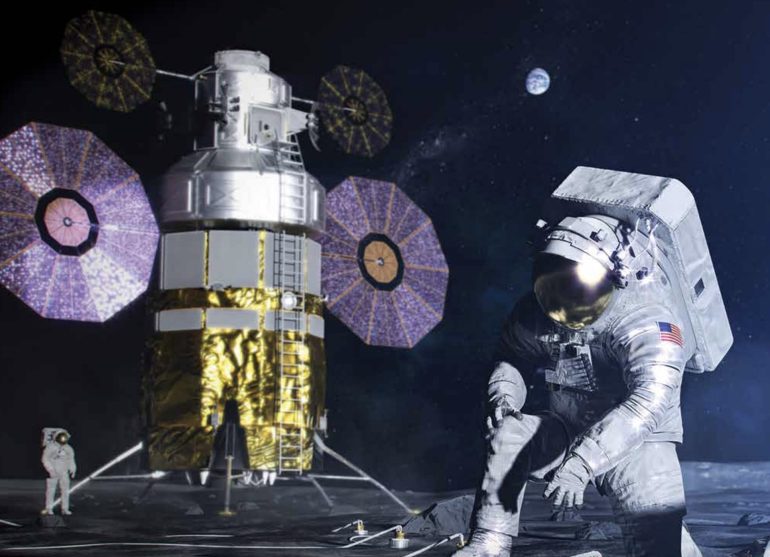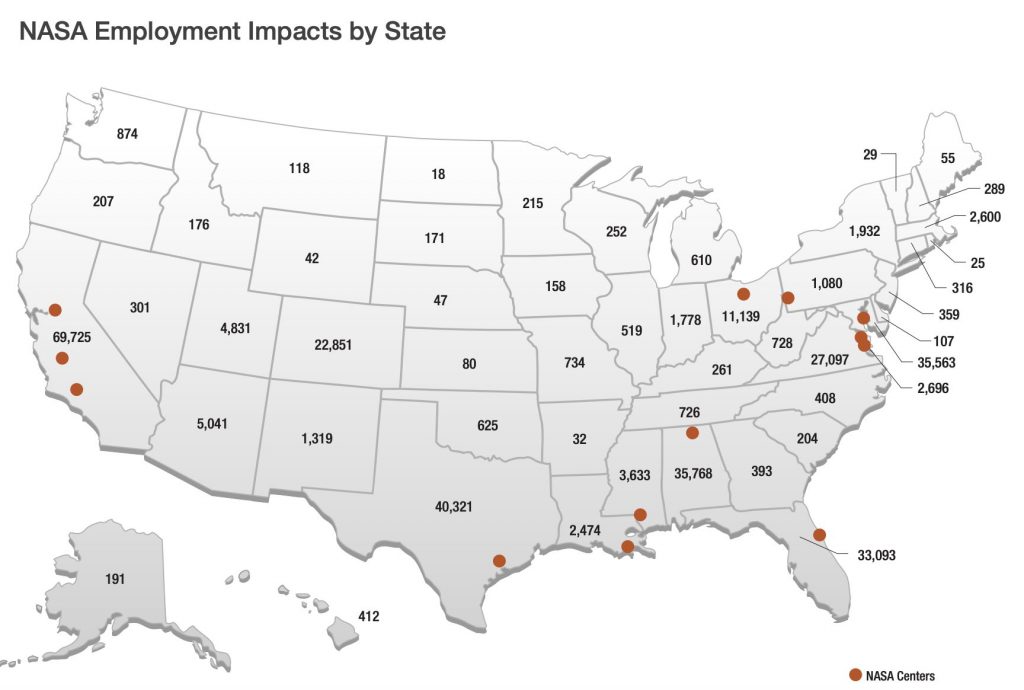NASA Releases Economic Impact Study

NASA released its first-ever Economic Impact Study today. Combining all NASA activities, the agency generated more than $64.3 billion in total economic output during fiscal year 2019, supported more than 312,000 jobs nationwide, and generated an estimated $7 billion in federal, state, and local taxes throughout the United States. A summary of the study is also available.
An ongoing concern among some politicians has been that spending on space is a waste of money when the money could be used to increase social welfare spending or other government programs. What this report proves is that NASA is actually a generator of jobs and wealth while simultaneously improving the world’s standard of living.
“In this new era of human spaceflight, NASA is contributing to economies locally and nationally, fueling growth in industries that will define the future, and supporting tens of thousands of new jobs in America,” said NASA Administrator Jim Bridenstine. “With an investment of just one-half of 1% of the federal budget, NASA generates significant total economic output annually. This study confirms, and puts numbers, to what we have long understood – that taxpayer investment in America’s space program yields tremendous returns that strengthen our nation on several fronts – a stronger economy, advances in science and technology, and improvements to humanity.”

Additional key findings of the study include:
- Every state in the country benefits economically through NASA activities. Forty-three states have an economic impact of more than $10 million. Of those 43 states, eight have an economic impact of $1 billion or more.
- The agency’s Moon to Mars initiative, which includes the Artemis program, supports more than 69,000 jobs, $14 billion in economic output, and $1.5 billion in tax revenue. The agency’s Moon to Mars programs provided about 22 percent of NASA’s economic impact. These figures are expected to double in 2021.
- NASA has more than 700 active international agreements for various scientific research and technology development activities in FY2019. The International Space Station is a significant representative of international partnerships – representing 15 nations and five space agencies and has been operating for 20 years.
- NASA spinoff technologies provide an impact on American lives beyond dollars and jobs. The agency has recorded more than 2,000 spinoffs since 1976. For example, engineers at NASA’s Jet Propulsion Laboratory developed, in just 37 days, a ventilator specifically for coronavirus patients and, after securing an emergency use authorization from the Food and Drug Administration, made the design available to select manufacturers at no cost.
- Scientific research and development – which fuels advancements in science and technology that can help improve daily life on Earth and for humanity – enjoys the largest single-sector impact, accounting for 16% of the overall economic impact of NASA’s Moon to Mars program.



